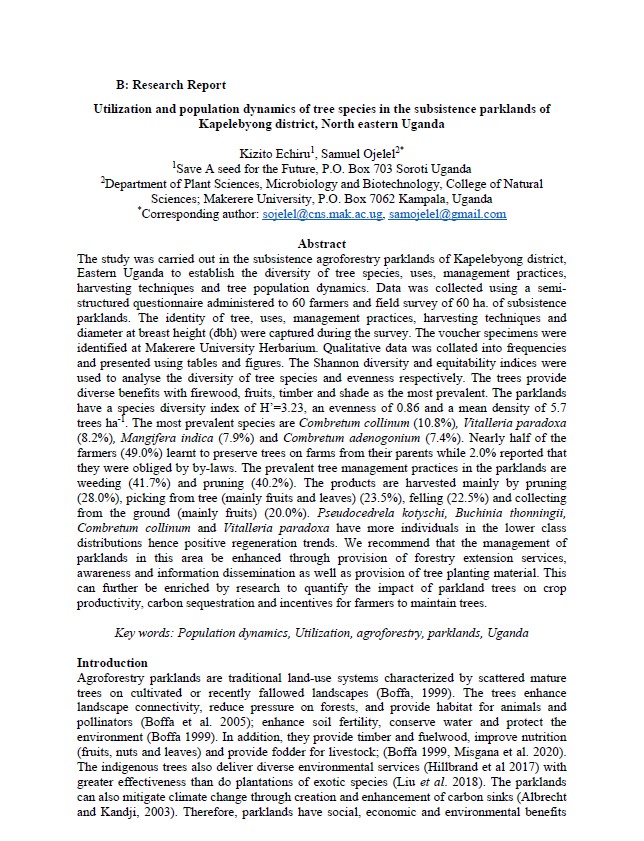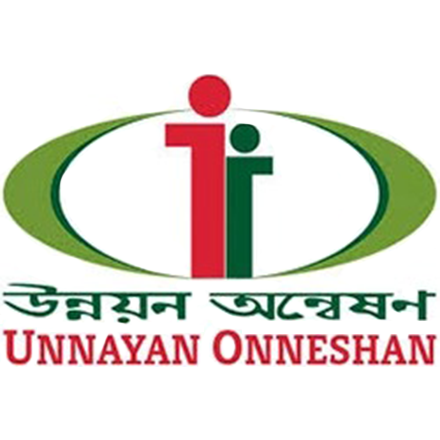Utilization and population dynamics of tree species in the subsistence parklands of Kapelebyong district, North eastern Uganda
The study was carried out in the subsistence agroforestry parklands of Kapelebyong district, Eastern Uganda to establish the diversity of tree species, uses, management practices, harvesting techniques and tree population dynamics. Data was collected using a semi-structured questionnaire administered to 60 farmers and field survey of 60 ha. of subsistence parklands. The identity of tree, uses, management practices, harvesting techniques and diameter at breast height (dbh) were captured during the survey. The voucher specimens were identified at Makerere University Herbarium. Qualitative data was collated into frequencies and presented using tables and figures. The Shannon diversity and equitability indices were used to analyse the diversity of tree species and evenness respectively. The trees provide diverse benefits with firewood, fruits, timber and shade as the most prevalent. The parklands have a species diversity index of H’=3.23, an evenness of 0.86 and a mean density of 5.7 trees ha-1. The most prevalent species are Combretum collinum (10.8%), Vitalleria paradoxa (8.2%), Mangifera indica (7.9%) and Combretum adenogonium (7.4%). Nearly half of the farmers (49.0%) learnt to preserve trees on farms from their parents while 2.0% reported that they were obliged by by-laws. The prevalent tree management practices in the parklands are weeding (41.7%) and pruning (40.2%). The products are harvested mainly by pruning (28.0%), picking from tree (mainly fruits and leaves) (23.5%), felling (22.5%) and collecting from the ground (mainly fruits) (20.0%). Pseudocedrela kotyschi, Buchinia thonningii, Combretum collinum and Vitalleria paradoxa have more individuals in the lower class distributions hence positive regeneration trends. We recommend that the management of parklands in this area be enhanced through provision of forestry extension services, awareness and information dissemination as well as provision of tree planting material. This can further be enriched by research to quantify the impact of parkland trees on crop productivity, carbon sequestration and incentives for farmers to maintain trees.
- Country
- Uganda
- Organisation
- Save A seed for the Future (SAFE)
- Publisher
- Save A seed for the Future (SAFE)
- Publication date
- August 1970

